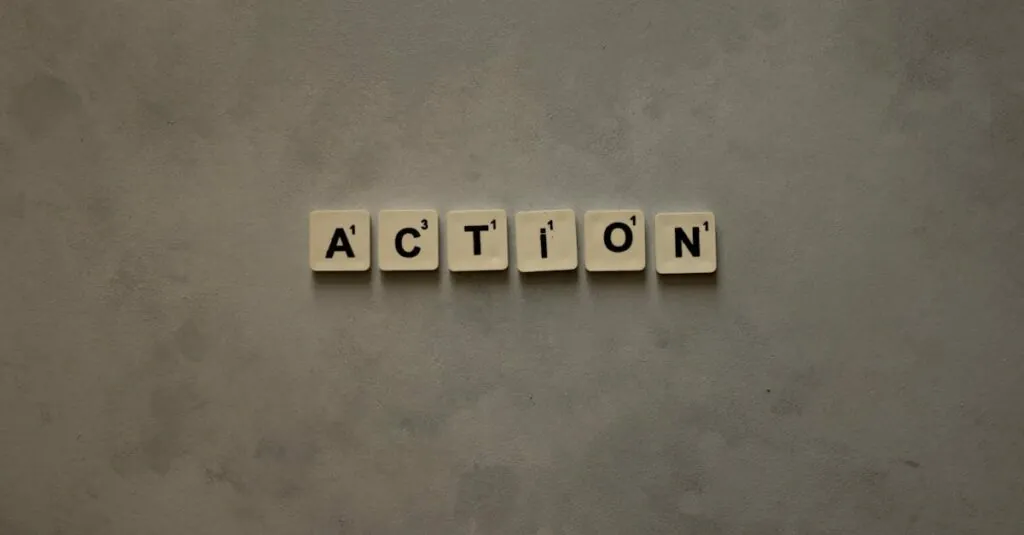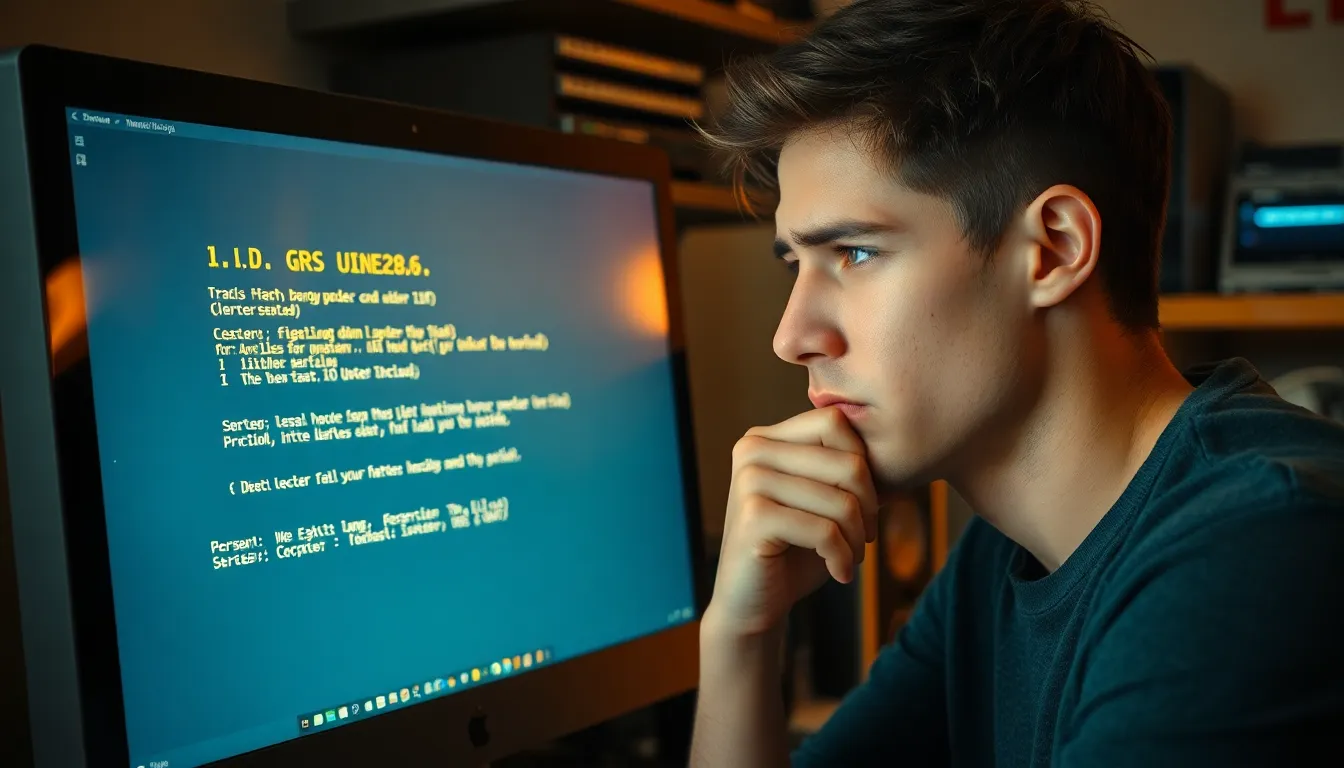In a world where problem-solving often feels like a game of whack-a-mole, creative thinking exercises can be the secret weapon that transforms mundane tasks into exhilarating challenges. Imagine flexing your brain like a muscle, breaking free from the shackles of routine, and unleashing a torrent of innovative ideas. Sounds appealing, right?
Table of Contents
ToggleOverview of Creative Thinking Exercises
Creative thinking exercises encompass various activities designed to stimulate innovative thought processes. These exercises encourage exploration of ideas and foster the ability to approach challenges from multiple perspectives. Engaging regularly in creative tasks leads to improved problem-solving outcomes.
Examples of effective exercises include mind mapping, brainstorming sessions, and role-playing scenarios. Mind mapping helps in visualizing connections between concepts, allowing individuals to expand their ideas systematically. Brainstorming sessions prioritize rapid idea generation without immediate judgment, promoting a free flow of thoughts. Role-playing scenarios enable participants to step into different personas, enhancing empathy and revealing new insights.
Incorporating these exercises into daily routines can yield substantial benefits. Regular practice not only enhances creativity but also builds resilience against conventional thinking patterns. Collaborative exercises amplify this effect by allowing participants to share diverse viewpoints and integrate them into cohesive solutions.
Using constraints can also spur creativity. Exercises that impose limitations force individuals to think differently and devise unique solutions. For instance, setting a time limit or using only specific materials can challenge conventional approaches and ignite creative sparks.
Participating in workshops or group activities can further enhance the experience. Such engagements often introduce fresh techniques and inspire motivation among peers. Embracing a variety of creative thinking exercises contributes significantly to ongoing personal and professional development.
Benefits of Creative Thinking Exercises
Engaging in creative thinking exercises yields numerous benefits. These activities not only enhance problem-solving abilities but also boost imagination and innovation.
Enhancing Problem-Solving Skills
Creative thinking exercises improve problem-solving skills by fostering a flexible mindset. Participants learn to analyze challenges from various angles, making it easier to identify effective solutions. Mind mapping allows individuals to visualize connections between ideas, leading to clearer conclusions. Brainstorming sessions encourage open dialogue, resulting in diverse ideas that may not surface in traditional settings. Role-playing scenarios create immersive environments where individuals can experiment and learn from outcomes. Enhanced problem-solving skills contribute to increased confidence when addressing complex tasks.
Boosting Imagination and Innovation
Imagination flourishes through active engagement in creative exercises. These activities break down mental barriers and encourage original thought. Regular participation in exercises like storytelling or improvisation stimulates creative instincts. Exploring new perspectives helps to generate unique ideas that drive innovation. Collaborative efforts deepen this effect by integrating diverse viewpoints, inspiring inventive solutions. By stepping outside comfort zones, participants unlock new levels of creativity, fueling personal and professional growth.
Types of Creative Thinking Exercises
Several creative thinking exercises serve to enhance problem-solving skills and stimulate innovative thought processes. Below are key types of exercises that individuals and teams can incorporate into their routines.
Brainstorming Techniques
Brainstorming techniques encourage the free-flowing exchange of ideas. Using a time limit, participants generate as many ideas as possible, avoiding criticism during the process. This approach fosters an open environment where unique thoughts flourish. Categorizing ideas and selecting the best solutions afterward can enhance outcomes. Utilizing tools like online brainstorming platforms further supports collaboration, especially in remote settings. Classic methods like round-robin brainstorming ensure that every voice is heard, generating diverse perspectives.
Mind Mapping Strategies
Mind mapping strategies facilitate the visualization of relationships among ideas. Starting with a central concept, individuals create branches for related terms, allowing for a structured exploration of thoughts. This visual format helps identify connections and gaps in knowledge. To further refine ideas, participants can group similar concepts together, enhancing clarity. Regular use of mind mapping tools leads to improved retention and recall. Exploring varying themes in mind maps also reveals new pathways to innovation.
Role-Playing Exercises
Role-playing exercises immerse individuals in realistic scenarios to enhance creativity. Taking on different roles encourages participants to view challenges from new angles. This practice builds empathy and expands understanding of various perspectives. Implementing structured role-playing sessions can simulate negotiation, collaboration, or problem-solving situations. Participants often discover innovative solutions through this hands-on approach. Using feedback sessions post-exercise strengthens learning and accelerates idea generation.
How to Incorporate Creative Thinking Exercises
Incorporating creative thinking exercises into daily routines enhances problem-solving skills and stimulates innovation. This approach not only fosters a flexible mindset but also engages individuals in various activities to promote creativity.
Tips for Effective Implementation
Start with defining clear objectives for each exercise. Setting a goal directs focus and encourages accountability. Engage participants by varying activities regularly to maintain interest and energy. Create a safe space for sharing ideas, where individuals feel valued. Encourage open-mindedness to foster unique responses. Facilitate sessions by providing guidance while allowing organic discussions. Reinforce creative thinking by incorporating follow-ups to analyze outcomes. Monitor progress and celebrate successes to motivate participants.
Setting Up a Creative Environment
Establish a space conducive to creativity by choosing an area that inspires exploration. Include comfortable seating and stimulating visuals to enhance comfort and motivation. Incorporate tools like whiteboards and sticky notes to encourage spontaneous idea generation. Allow for flexible layouts where individuals can rearrange furniture to suit group dynamics. Ensure sufficient natural light to energize participants and improve focus. Surround the area with a variety of brainstorming materials to prompt innovative thinking. Provide access to technology that supports collaboration and idea sharing.
Engaging in creative thinking exercises offers a pathway to enhanced problem-solving and innovation. By regularly incorporating these activities into daily routines individuals can unlock their creative potential and break free from conventional thought patterns. The diverse techniques discussed not only promote idea generation but also foster collaboration and resilience.
Creating an environment that encourages exploration further amplifies these benefits. As participants embrace challenges and experiment with new approaches they pave the way for personal and professional growth. Ultimately the commitment to creative thinking exercises can lead to transformative outcomes that inspire continuous improvement and ingenuity.






